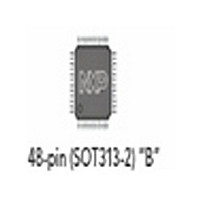SC16C650AIB48 NXP Semiconductors, SC16C650AIB48 Datasheet - Page 46

SC16C650AIB48
Manufacturer Part Number
SC16C650AIB48
Description
Manufacturer
NXP Semiconductors
Datasheet
1.SC16C650AIB48.pdf
(50 pages)
Specifications of SC16C650AIB48
Transmitter And Receiver Fifo Counter
Yes
Package Type
LQFP
Operating Supply Voltage (max)
5.5V
Mounting
Surface Mount
Pin Count
48
Operating Temperature (min)
-40C
Operating Temperature (max)
85C
Operating Temperature Classification
Industrial
Number Of Channels
1
Lead Free Status / RoHS Status
Compliant
Available stocks
Company
Part Number
Manufacturer
Quantity
Price
Company:
Part Number:
SC16C650AIB48,151
Manufacturer:
NXP Semiconductors
Quantity:
10 000
Philips Semiconductors
9397 750 11622
Product data
12.3.2 Wave soldering
12.3.3 Manual soldering
Moisture sensitivity precautions, as indicated on packing, must be respected at all
times.
Conventional single wave soldering is not recommended for surface mount devices
(SMDs) or printed-circuit boards with a high component density, as solder bridging
and non-wetting can present major problems.
To overcome these problems the double-wave soldering method was specifically
developed.
If wave soldering is used the following conditions must be observed for optimal
results:
During placement and before soldering, the package must be fixed with a droplet of
adhesive. The adhesive can be applied by screen printing, pin transfer or syringe
dispensing. The package can be soldered after the adhesive is cured.
Typical dwell time of the leads in the wave ranges from 3 to 4 seconds at 250 C or
265 C, depending on solder material applied, SnPb or Pb-free respectively.
A mildly-activated flux will eliminate the need for removal of corrosive residues in
most applications.
Fix the component by first soldering two diagonally-opposite end leads. Use a low
voltage (24 V or less) soldering iron applied to the flat part of the lead. Contact time
must be limited to 10 seconds at up to 300 C.
When using a dedicated tool, all other leads can be soldered in one operation within
2 to 5 seconds between 270 and 320 C.
•
•
•
•
below 235 C (SnPb process) or below 260 C (Pb-free process) for packages with
a thickness < 2.5 mm and a volume < 350 mm
Use a double-wave soldering method comprising a turbulent wave with high
upward pressure followed by a smooth laminar wave.
For packages with leads on two sides and a pitch (e):
The footprint must incorporate solder thieves at the downstream end.
For packages with leads on four sides, the footprint must be placed at a 45 angle
to the transport direction of the printed-circuit board. The footprint must
incorporate solder thieves downstream and at the side corners.
– for packages with a thickness
– for packages with a thickness < 2.5 mm and a volume
– larger than or equal to 1.27 mm, the footprint longitudinal axis is preferred to be
– smaller than 1.27 mm, the footprint longitudinal axis must be parallel to the
thick/large packages.
parallel to the transport direction of the printed-circuit board;
transport direction of the printed-circuit board.
Rev. 04 — 20 June 2003
UART with 32-byte FIFO and IrDA encoder/decoder
2.5 mm
3
so called small/thin packages.
© Koninklijke Philips Electronics N.V. 2003. All rights reserved.
SC16C650A
350 mm
3
so called
46 of 50
















